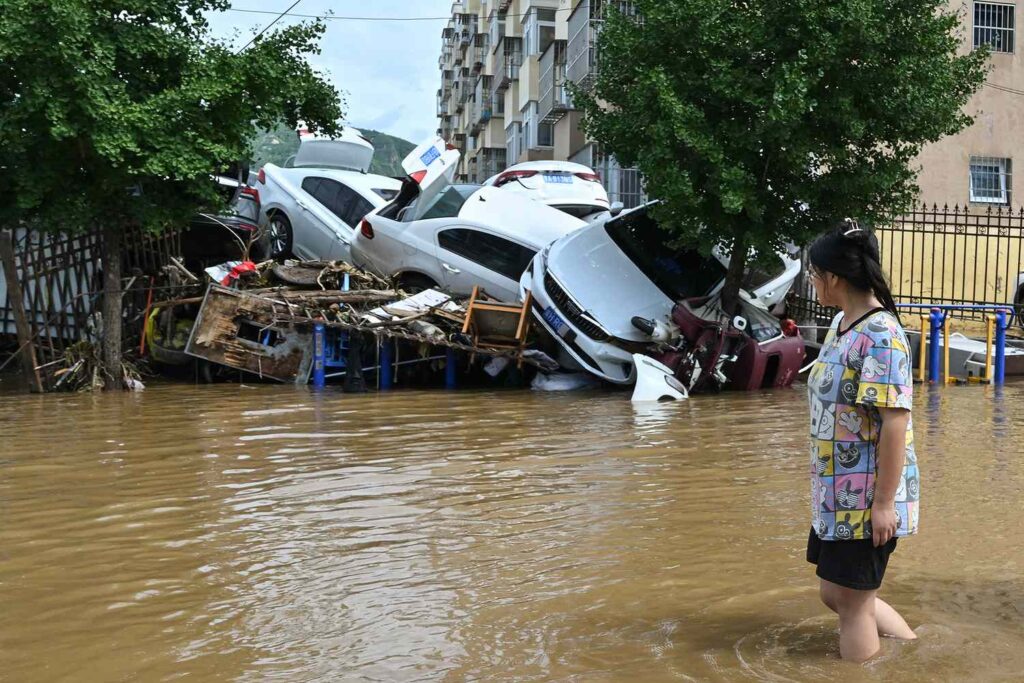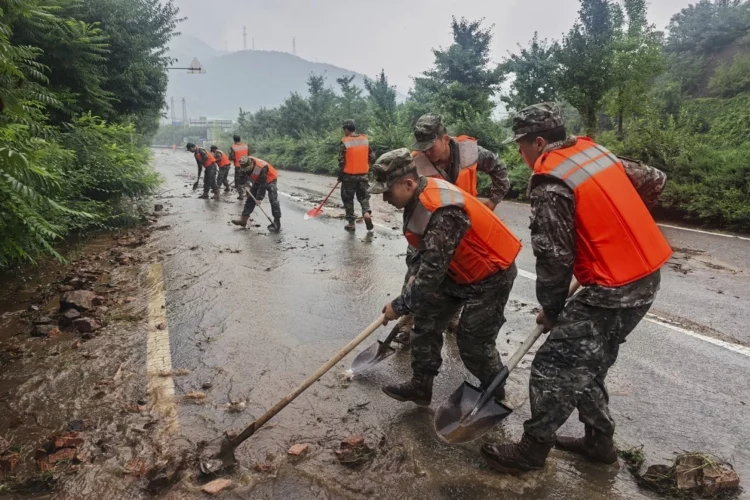BEIGING; Northern China is grappling with one of its worst flooding disasters in recent years as relentless rainstorms have battered the region, leading to deadly landslides, overflowing rivers, and mass evacuations. As of Wednesday, more than 38 people have been confirmed dead, with tens of thousands forced to flee their homes amid rising waters and infrastructure collapse.

The unprecedented deluge has severely impacted Beijing and its surrounding provinces, including Hebei, Tianjin, Shanxi, and parts of Inner Mongolia. Chinese meteorological authorities have raised the second-highest alert for rainstorms across 13 provinces in the north, east, and south of the country, signaling the seriousness of the situation.
In Beijing alone, authorities reported evacuating over 80,000 residents, particularly from flood-prone rural areas. The suburban district of Miyun has been hit the hardest, accounting for 28 of the fatalities. Another two deaths occurred in the Yanqing district. Emergency teams have been working around the clock to rescue stranded residents, repair damaged roads, and restore disrupted communication and power lines.
More than 130 villages across Beijing have lost power due to landslides and flooding, while several roads have been submerged or washed away. To prevent dam failure, authorities in Miyun were compelled to release water from the reservoir — now at its highest level since its construction in 1959 — exacerbating downstream flood risks but deemed necessary to safeguard the structure.
Chinese President Xi Jinping has ordered “all-out” rescue efforts and called on local governments to act swiftly in relocating at-risk populations. In a statement, Xi emphasized the need to prioritize life and safety, particularly for the elderly, children, and those living in remote mountain communities. The central government has already mobilized military units and emergency relief teams and allocated substantial funding to assist flood-hit regions with immediate recovery and shelter.

The Ministry of Emergency Management confirmed that over 10,000 emergency personnel, including soldiers, paramedics, and disaster specialists, have been deployed across affected areas. Temporary shelters have been established in schools, sports centers, and public buildings to accommodate the displaced population, many of whom lost homes or belongings to the rising waters.
The flooding also raises renewed concerns over China’s growing vulnerability to climate-induced weather extremes. While flooding is not uncommon during China’s summer months, experts note that the northern regions, traditionally dry and semi-arid, have been experiencing unusually high levels of rainfall in recent years. Meteorologists and climate scientists suggest that climate change may be altering precipitation patterns, increasing both the frequency and intensity of storms across the country.
This latest disaster follows a similar pattern of extreme weather events across China this year, including devastating floods in southern provinces like Guangdong and Guangxi, heatwaves in inland areas, and typhoons battering coastal cities.
As the country braces for continued rainfall in the days ahead, Chinese authorities are urging residents in high-risk zones to remain alert and heed evacuation orders. Emergency alerts remain in effect as more rain is forecast across the region.
























